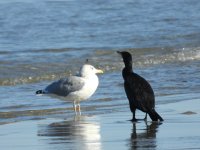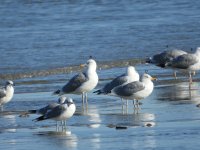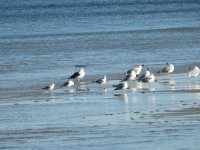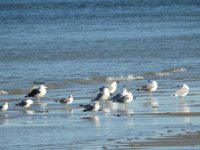JayFeatherPL
Well-known member

19th October, Northern Poland, Baltic Sea
I know it may be impossible to ID every gull there because of no photos showing the pattern on the wing, but I'd like to know at least the most likely options.
Each gull individual has its unique number or letter.
29 photos: the rest of the photos are in the comments.
These are my guesses:
1 - Cachinnans?
2 - Cachinans?
3 - Argentatus?
4 - 3rd winter Cachinnans?
5 - Michahellis?
0 - Argentatus?
A - Argentatus?
B - Cachinnans?
C - Cachinnans?
D - Argentatus?
E - Cachinans?
F - Michahellis?
X - Michahellis?
Y - Cachinnans?
Z - 3rd winter Cachinnans?
Are these correct?
I know it may be impossible to ID every gull there because of no photos showing the pattern on the wing, but I'd like to know at least the most likely options.
Each gull individual has its unique number or letter.
29 photos: the rest of the photos are in the comments.
These are my guesses:
1 - Cachinnans?
2 - Cachinans?
3 - Argentatus?
4 - 3rd winter Cachinnans?
5 - Michahellis?
0 - Argentatus?
A - Argentatus?
B - Cachinnans?
C - Cachinnans?
D - Argentatus?
E - Cachinans?
F - Michahellis?
X - Michahellis?
Y - Cachinnans?
Z - 3rd winter Cachinnans?
Are these correct?
Attachments
-
 DSCN7091.JPG3.2 MB · Views: 33
DSCN7091.JPG3.2 MB · Views: 33 -
 DSCN7107.JPG3.4 MB · Views: 32
DSCN7107.JPG3.4 MB · Views: 32 -
 DSCN7110.JPG3 MB · Views: 31
DSCN7110.JPG3 MB · Views: 31 -
 DSCN7111.JPG3.3 MB · Views: 32
DSCN7111.JPG3.3 MB · Views: 32 -
 DSCN7112.JPG3.3 MB · Views: 31
DSCN7112.JPG3.3 MB · Views: 31 -
 DSCN7113.JPG3.5 MB · Views: 33
DSCN7113.JPG3.5 MB · Views: 33 -
 DSCN7114.JPG3.4 MB · Views: 35
DSCN7114.JPG3.4 MB · Views: 35 -
 DSCN7115.JPG3.4 MB · Views: 33
DSCN7115.JPG3.4 MB · Views: 33 -
 DSCN7116.JPG3.1 MB · Views: 29
DSCN7116.JPG3.1 MB · Views: 29 -
 DSCN7105.JPG3.3 MB · Views: 27
DSCN7105.JPG3.3 MB · Views: 27 -
 DSCN7104.JPG3.5 MB · Views: 24
DSCN7104.JPG3.5 MB · Views: 24 -
 DSCN7103.JPG3.5 MB · Views: 24
DSCN7103.JPG3.5 MB · Views: 24 -
 DSCN7101.JPG3.3 MB · Views: 20
DSCN7101.JPG3.3 MB · Views: 20 -
 DSCN7100.JPG3.2 MB · Views: 21
DSCN7100.JPG3.2 MB · Views: 21 -
 DSCN7098.JPG3.4 MB · Views: 19
DSCN7098.JPG3.4 MB · Views: 19 -
 DSCN7097.JPG3.4 MB · Views: 17
DSCN7097.JPG3.4 MB · Views: 17 -
 DSCN7096.JPG3.2 MB · Views: 16
DSCN7096.JPG3.2 MB · Views: 16 -
 DSCN7094.JPG3.4 MB · Views: 18
DSCN7094.JPG3.4 MB · Views: 18 -
 DSCN7093.JPG3.5 MB · Views: 18
DSCN7093.JPG3.5 MB · Views: 18 -
 DSCN7092.JPG3.3 MB · Views: 29
DSCN7092.JPG3.3 MB · Views: 29












